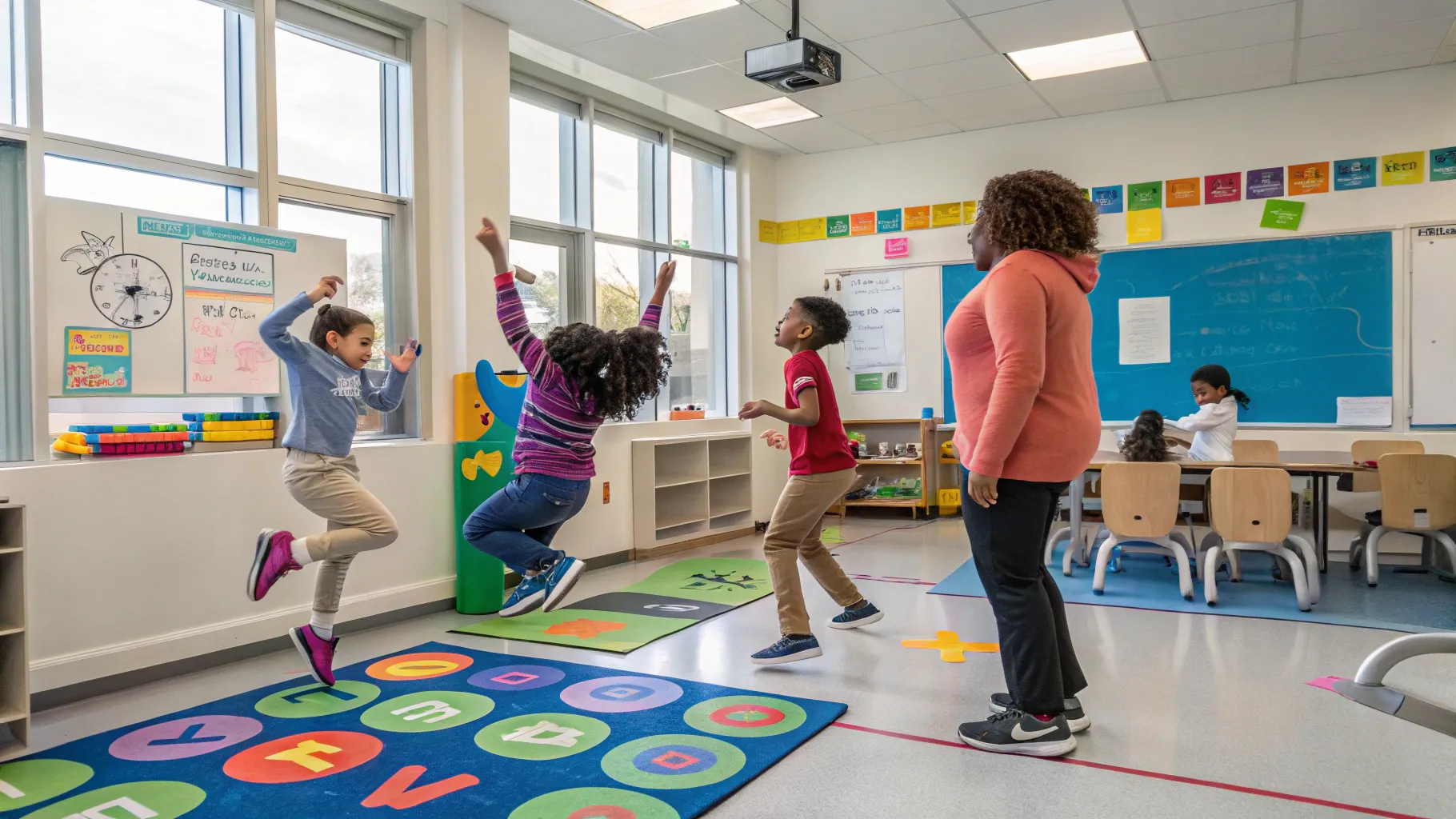
Teaching hyperactive students, especially in an online setting, can feel like a whirlwind, but with the right strategies, you can create an engaging and productive learning environment without getting into burnout and exhaustion. Whether you’re a seasoned educator or new to the classroom, understanding how to connect with these energetic learners is crucial. Let’s dive into effective techniques that will not only help you manage hyperactive behavior but also make learning fun and rewarding for both you and your students.
Building Rapport
Establishing a connection with your students is vital, especially when dealing with hyperactive learners. Start your classes with a warm-up interaction. For instance, play a greeting song or a guessing game while learning about your student’s favorite fruit, toy, vegetable and so on. Show genuine interest in getting to know them better.
Engaging in light conversation, like asking how their day has been, sets a friendly tone. It’s essential to create an environment where students feel comfortable sharing and participating. This rapport can significantly enhance their focus during lessons.

Embracing Humor and Fun
Hyperactive students often respond well to humor and playful interactions. Don’t hesitate to make funny faces or voices during your teaching. While this may seem trivial, it’s a powerful tool to keep their attention and encourage participation.
For example, when transitioning into a lesson, you might say, “Are you ready to start learning? Let’s go!” and use a silly voice. This playful approach helps maintain their interest and makes the classroom atmosphere lively. You could also chant through the lesson, have roll-plays with funny voices and act out the stories with lots of exaggeration – your student will love it and it also helps them focus on guided activities later.
Redirecting Attention Back to the Lesson
When teaching hyperactive students, you’ll often find their attention drifting. It’s crucial to redirect them gently back to the lesson without making them feel reprimanded. If a student begins to stray off-topic, acknowledge what they said briefly and then steer the conversation back to the subject matter.
For instance, if a student starts discussing their favorite cartoon, you could say, “That’s interesting! Now, let’s look at this writing project we have today.” This technique maintains respect for their thoughts while also keeping the class on track. We higly recommend using a timer for guided activities, thus offering clear rules to follow and predictability in the lesson flow. Keep the learning portions of your lesson short – 1 to 3 minutes – while adding lots of brain breaks and rewards after each.
Using Knowledge Extension
Knowledge extension is a fantastic way to engage hyperactive students. This involves sharing additional interesting information related to the lesson that can spark curiosity. For example, while discussing planets, you might find fun facts about their favorite planet and read and discuss them together, or let your student draw it within the set time (i.e. 1 minute).
Encouraging students to think critically about the content helps them connect the dots between the lesson and real-life scenarios. When they see the relevance, they’re more likely to stay engaged and actively participate.

Maintaining Professionalism Amid Distractions
As a teacher, it’s important to remain composed, even when faced with disruptive behavior. Your body language and expressions should convey patience and professionalism. If a student’s hyperactivity becomes overwhelming, find ways to express your feelings without showing frustration.
Instead of reacting negatively, use positive language. For example, if a student is fidgeting or talking out of turn, you might say, “I see you have a lot of energy today! Let’s channel that into our lesson.” This approach turns their hyperactivity into a positive force, encouraging them to focus on the task at hand.
Balancing Authority and Friendship
It’s essential to strike a balance between being a friend and maintaining authority in the classroom. Students should feel comfortable approaching you, but they also need to understand that you are in charge. Establish clear guidelines and expectations early on, and help your students follow the classroom rules by setting them clearly and making them easy to follow.
When students respect your authority, they’re more likely to engage with the material and follow your lead during lessons. Use a friendly tone while reinforcing your role as the teacher, reminding them that you’re there to help them succeed.
Incorporating Movement and Breaks
Movement is key when working with hyperactive students. Incorporate physical activities into your lessons to help them expend energy while learning. Simple activities like stretching or quick exercises between lessons can refresh their focus and keep them engaged. Using lots of TPR (total body response) and having your student act out the key words, roll plays and characters in the lessons allows for better participation and more productive learning process. Movement is actually a learning tool you could use to enforce the new concepts and knowledge retention and comprehension.
Consider implementing short breaks where students can stand up, move around, or even do a quick dance. Incorporate movement in the lesson activities themselves. This not only helps reset their attention but also creates a fun and dynamic learning environment.

Using Visual Aids and Interactive Tools
Visual aids can be incredibly effective in capturing the attention of hyperactive students. Use flashcards, songs, videos, and interactive tools such as games and rewards to make lessons more engaging.
Interactive tools like Wordwall quizzes and games or interactive TopWorksheets can also keep students involved. Gamifying lessons encourages participation and makes learning feel less like a chore and more like an enjoyable activity.
Setting Short-Term Goals
Hyperactive students often thrive with short-term goals. Breaking down tasks into smaller, manageable objectives can prevent overwhelm and keep them focused.
For instance, you could set a goal for the day, such as “Today, we will complete two pages of our writing project.” This clear, achievable target gives students something to strive for, and celebrating their achievements can boost their confidence.
Documenting Progress and Communication with Parents
Effective communication with parents is essential in supporting hyperactive students – young learners. Documenting progress and behaviors during lessons can provide valuable insights for parents. If a student struggles to focus, make a note of it and share it with their guardians. You can streamline and follow your lesson feedback with SuperTeacher, add feedback and homework after each class and have the parent get notified to read and follow up in a timely manner.
Regular updates can help parents understand their child’s progress and areas for improvement. Consider suggesting strategies that can be reinforced at home, creating a consistent support system for the student.
Embracing the Challenge
Teaching hyperactive students can be challenging, but it’s also incredibly rewarding. By employing these strategies, you can create an engaging classroom environment that fosters learning and growth. Remember, building rapport, structuring the lesson flow clearly, and maintaining professionalism are key components in successfully teaching these dynamic learners.
With patience, creativity, and a willingness to adapt, you can turn the challenges of teaching hyperactive students into opportunities for meaningful connections and impactful learning experiences, and why not – even a niche for your independent teaching business. Happy teaching!



